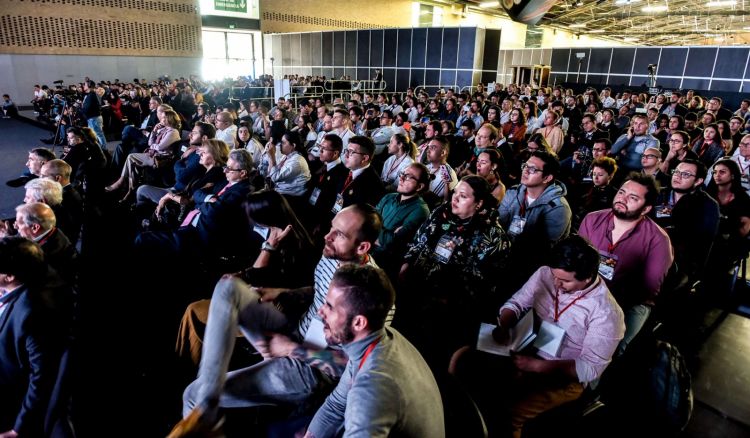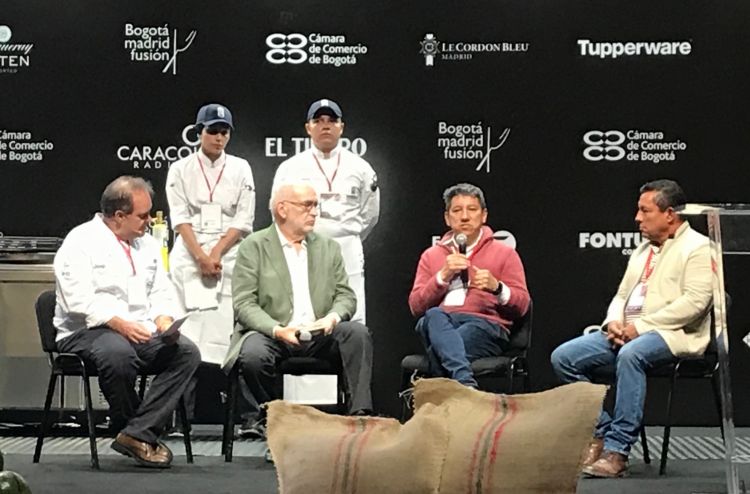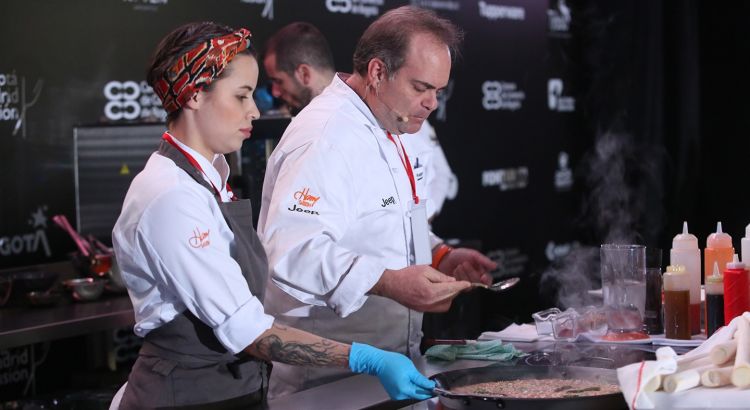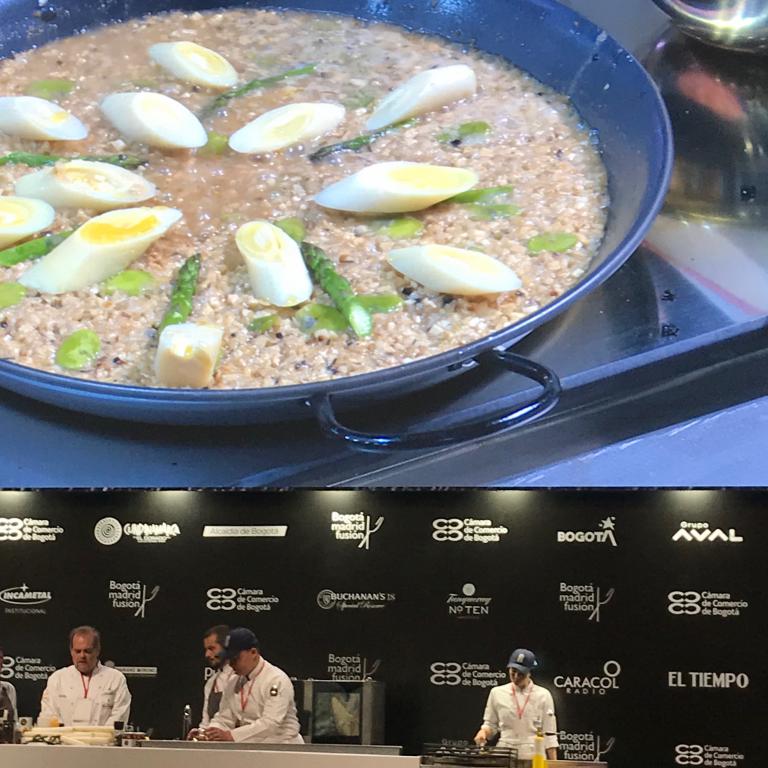The first edition of Bogota Madrid Fusion, the Latin-American spin off of the Spanish gastronomic congress (the second-born in Spain, right after Lo mejor de la gastronomia, which later became Gastronomika) has just ended. As we told in this article presenting the event, it wasn’t the first time abroad for Madrid Fusion, which had already organised similar events in Manila, Tokyo, and Mexico City.
However, it had been seven years since Madrid Fusion last went to Latin America: the new relationship with Colombia was born under the best auspices, with the organisers convinced that this country has a huge potential for gastronomic development and a scene ready to explode, grabbing the international interest just like Peru did in the past few years.
A few hours after Bogotá Madrid Fusion has ended, we asked Mónica de Greiff for her thoughts. She’s the president of the Chamber of Commerce of the Colombian city and main inspirer of this event, together with Vocento, owners of the Madrid Fusionformat. And she was beaming, thanks to the success of this first edition.
«The participation truly went beyond our expectations, – she told us. – We knew we would inspire lots of interest, but we did not expect that on the first edition all the lessons of the congress meant for industry professionals, and all the cooking demos aimed for the public, would take place in front of such a crowded audience. We did know however, and now we’re even more convinced of this, that this commitment is a serious and long-term business. We’ve signed a 5-year agreement with Vocento: Bogotá Madrid Fusion is not an extemporary project, but a significant investment we’re making for the development of high-quality gastronomy in our country».
A concept that was crucial in most of the lessons that had Colombian chefs involved: five of them were in fact selected to present together with 15 prominent international guests, including Joan Roca, Quique Dacosta, Yoshihiro Narisawa, Virgilio Martínez, Ana Roš, Enrique Olvera, Magnus Ek.
In the next few days, on these pages, we’ll illustrate the different points of view on the theme, the ideas and experiences of all these protagonists of Colombian fine dining. Today we start from the voice of Harry Sasson, a “veteran” in the gastronomic scene of Bogotá, who’s at number 23 in the 50 Best Latin America with his Restaurante Harry Sasson.

The main hall of the Congress
It was because of this long experience that he was given the task of opening the Congress with his lesson:
Sasson did so by focusing on a topic that later appeared to be the real fil rouge in the discussion on the development of Colombian cuisine: giving value to local products. «Ever since I first started to train abroad, especially in Canada -
Sasson told us – I realised the value of selecting the best products for the gastronomic offer to be of high quality. But this is not enough: cooks must be aware of their social responsibility and that their choices can change the lives of many producers. The relationship between producers and fine dining is essential and today in Colombia we need to be once again proud of giving value to the extraordinary richness and biodiversity that our land can offer. And we must make aware choices».
During his lesson, Harry Sasson gave the best example, the most convincing proof of this commitment by inviting on stage, with him, two members of the Montenegro family: a family of farmers from the Putumayo region (in the south of Colombia, on the border with Ecuador and Peru), with whom the chef, some 19 years ago, started to collaborate for the supply of a raw material that proved to be important not only from a gastronomic point of view, but also social: Palmito.
As the Montenegros finely illustrated, back in the Nineties farmers in the Putumayo region had a very difficult life because of the increasing pressure coming from drug traffickers so that farmers would grow coca. This led to violence and strong social unsettlement. But farmers were weak compared to the pressure from the narcos also because there was no market for “traditional” cultivations, and therefore they were exposed to growing and growing poverty.

Sasson with the Montenegro family on the stage
Thanks also to the intervention of the Colombian government, and to a project financed by the United States, the cultivation of Palmito was selected as a possible alternative for the farmers of Putumayo, who gradually replaced the illegal cultivations meant for the production of cocaine. But further support was necessary, so that Palmito could become, even in Colombia, a renown and appreciated ingredient.
This is where the work of a chef like Harry Sasson, whose elegant restaurant is surely the most popular among the bourgeoisie of Bogota (on average it welcomes 300 people at lunchtime and in the evening, each day) made its part. And since 2000 he has started to offer several dishes in which local Palmito, produced from the cultivation of “chontaduro” palms, was the protagonist.

Sasson on the stage while preparing Paella with palmito
«First of all, we had to prove it was not just a salad ingredient, and perhaps of not great quality too. So, I started to study recipes that made use of fresh Palmito in an elegant context. Our efforts were repaid, not only because today, thanks to our work, 100 families live a safe and serene life thanks to the cultivation of these palms. But also because we have enriched our restaurant’s offer. Chefs don’t need just good products, but also, and mostly, products with a story, through which they can capture the interest of their guests, who are not just looking for food, but for experiences too».

To illustrate the many possibilities offered by Palmito to the audience of Bogotá Madrid Fusion, Sasson prepared different dishes. In particular, Ceviche with palmito and prawns, Paella with palmito, Mousse of palmito with lobster tail. During our dinner at Harry Sasson’s restaurant, inside a beautiful space, all glass and steel, we also tasted Palmito simply grilled on the embers and served with oil aromatised with basil, which allowed us to appreciate its delicateness and rich and tasty texture, on top of the values of social responsibility which he had finely explained during the Congress. On which we will return soon.
Translated into English by Slawka G. Scarso